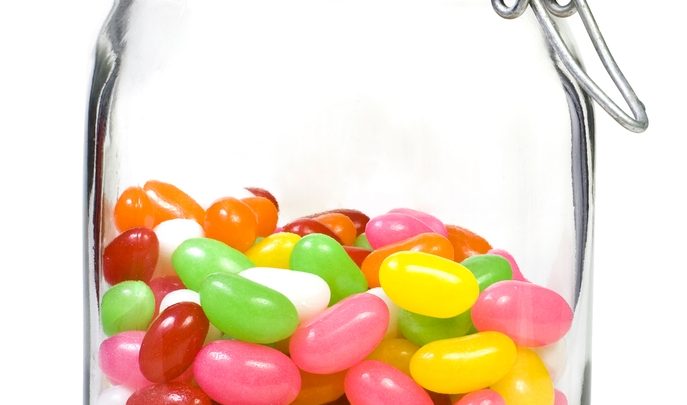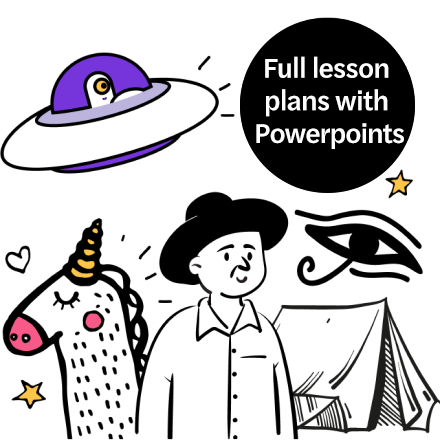Use Roald Dahl’s ‘The Great Mouse Plot’ to explore the creative potential of autobiographies in KS2 English

Few children will have a tale of a daringly concealed ex-rodent – but reading Roald Dahl’s The Great Mouse Plot will help them understand how their own histories can be turned into fabulous stories, says Carey Fluker Hunt…

- by Carey Fluker Hunt
- Creative learning consultant, writer and former teacher

A dead mouse, in a gobstopper jar? Even the boys who planted it had to wonder whether they’d gone too far. And that was before the shopkeeper complained to their headmaster! The ringleader of this exploit was, of course, the young Roald Dahl who, like many small boys, was very fond of sweets. The trouble was that the owner of the sweetshop was so odious, so vile, that she needed to be taught a lesson – one that became known as The Great Mouse Plot. It comes as no surprise to learn that Dahl’s childhood recollections are as subversively zany as his fiction, nor that so many of his subsequent themes can be traced back to his early years.
The Great Mouse Plot first appeared in Boy, Roald Dahl’s autobiography for younger readers. Now starring in its own volume as part of the 2016 World Book Day offer, this story makes a wonderful introduction to Dahl’s work for newly confident readers.
Use the ideas below, either on Roald Dahl Day or another time, to put it at the heart of your creative lesson planning for KS2…
Preparing to read
What do your children remember from their early lives, and how do they ‘see’ these memories – as frozen images, or video clips? Talk about memories, then pick one – something you can turn into a story.
In pairs, explore your chosen memories. Decide how to tell your story so that it grabs attention. Then share with the class and invite (constructive!) feedback. Explain the meaning of ‘autobiography’. Which memory-story that you’ve told so far would make the most interesting autobiography, and why?
Sharing the book
Read The Great Mouse Plot, and pick a moment when you have plenty of time to relax and talk about the story. What did your children think of it, and what did they like best? Does it remind them of an incident in their own lives, or another book they’ve read? To whom would they recommend the book, and what would they tell this person about it?
Remind your class about autobiographies and explain that this story is taken from Roald Dahl’s autobiography, Boy. How does Dahl’s story compare with the memory-stories your children worked on earlier?
Cross-curricular opportunities
“When writing about oneself, one must strive to be truthful…” – Roald Dahl Now write your memory-stories, being as honest as you can about facts, incidents and feelings. What might stop a writer from telling the truth? (Not remembering well enough, wanting to grab a reader’s attention, wanting to make themselves look better…) Is it difficult to be truthful, and does it matter if you’re not? Real experiences make a great starting point for fiction. In pairs, discuss your memory-stories. What real-world ‘extras’ (no dragons allowed!) could you add to make your stories more interesting? Rewrite to include these details, then share with the class. Can people tell what’s true and what’s ‘embroidery’?
Where do you get your ideas from?
Some of the themes and ideas in The Great Mouse Plot also appear in Dahl’s fiction, such as Willy Wonka’s devotion to sweets. Dahl’s observation that all grownups appear as giants makes us think of the BFG, for example, and the gruesome Mrs Thwaites has much in common with Mrs Twit.
Writers often use their lives and experiences to inspire their work. Try keeping an author notebook, noting ideas, words and observations that interest you. Using highlighters, mark anything that might kick-start a story. Discuss before choosing one idea to take further.
Plots and plans
When the boys took the dead mouse into the shop, Mrs Thwaites didn’t know what they were planning. This idea – that some characters know what’s going on while others don’t – provides uncertainty and tension, which make a story interesting. 1. Talk about the sweetshop encounter and how it could have played out differently What else could the boys have done and how might Mrs Thwaites have reacted? Perhaps she had a plot of her own? 2. Divide your class into two groups – shopkeepers and boys Ask both groups to generate alternative ideas for a sweetshop plot, discussing character reactions. Match a shopkeeper with two or three boys and give each group a minute or two to decide on the general outline for their encounter, then roleplay and discuss. What worked and what didn’t – and why? How did it feel, not knowing how the scene would turn out? 3. Use your discoveries to help you write alternatives to Dahl’s sweetshop plot Illustrate with line drawings inspired by Quentin Blake.
Sweeten your subjects
The action in The Great Mouse Plot wouldn’t have happened if the boys hadn’t loved sweets. What are your children’s favourite sweets? Show your results as an infographic, then gather data from other classes to compare. Do adults and children have different tastes? Some of the sweets listed by Dahl are still popular, but some (such as the ‘tonsil tickler’) are not. Find out about sweets in history. What do your children’s parents and grandparents remember about sweets when they were little? Compare the cost of sweets today and the sweets described by Dahl – sherbert suckers were two a penny, for example, and gobstoppers a penny each. Bring in some ‘old money’ and do some old-fashioned maths. Have a go at making some sweets – and while you’re busy with mixtures and utensils, why not be sweetie scientists, too? Traditional sweets such as pear drops and acid drops make interesting liquids when dissolved in warm water, and once they’ve cooled you can have fun combining them to create colour changes, or test them for acidity with litmus paper.
If this interests you, try making a natural indicator from red cabbage and use it to test your sweets. Read Charlie and the Chocolate Factory. Who can dream up the most outrageous and imaginative sweets?
“I have a picture in my mind…”
“…of a giant of a man with a face like a ham and a mess of rusty-coloured hair that sprouted in a tangle all over the top of his head…” This is how Roald Dahl describes the Headmaster in The Great Mouse Plot. Go through The Great Mouse Plot to find examples of Dahl’s character descriptions. What does he choose to tell us, and what kind of language does he use?
Dahl’s characters are so vividly described that they seem to jump off the page. Encourage children to be like Dahl and use close observation, imaginative insight and evocative language to make their own writing really sing.
Collect photographs of people from magazines and other sources. You’ll need lots, showing people of all ages and backgrounds. In a large, clear space, create a crowd by spreading the photos across the floor. Rest each photo on a bigger piece of paper so that notes can be made.
Browse your gallery, observing each character and allowing questions to come to mind. What would Dahl have noticed, and what would he want to know? At a given signal, choose a photograph and write a question about that person on the paper. Repeat, being as imaginative and thoughtful as possible. As a class, share the questions and suggest answers. Choose the photographs that most interest you and write Dahl-style descriptions of each. Keep your text short and encourage the kind of language that will make your characters jump off the page. Feedback and discuss. If you like, you can role play meetings between characters to explore them further and use to inspire story-writing featuring the characters you’ve generated.
Identity parades
In The Great Mouse Plot, the Headmaster takes the whole school outside for an identity parade. But how accurate can such a parade be? How well do we remember faces? Ask your class to devise a way to investigate this by using some of the photographs from the previous activity. For example, you could test everyone in school to see how well they remember faces by showing them a photograph at the start of the day, then asking them to pick the same image out of a lineup at home-time. Or you could create a Pairs Game using photocopies of images and record the scores of children playing it. You’ll need to make the investigation fair (e.g. by doing each test the same way) and decide what to measure and how to record it so that you can answer your chosen questions (who remembers faces better, children or adults? Which year group does best in this test)? Once you have some data you can decide how best to present it, and write reports on what you did and why, and what you’ve learned.
Taking it further…
Depending on how long you want run the project, there’s plenty more plotting to be done…
Bring back the cane? Mr Coombes thinks beating Dahl is the right thing to do, but Dahl’s mother disagrees. Does this make Mr Coombes a bad man? How else could he have dealt with boys who scared an old lady with a dead mouse?
In 1923 it was common for children to be beaten. Find out about the history of schools and corporal punishment and make a school display about Children’s Rights.
Collecting memories If you’ve enjoyed turning your own memories into stories, why not collect other people’s? Older relatives might be willing to be interviewed, or you could make links with an old-people’s home whose residents might enjoy talking about their childhood memories.
This could be an opportunity to invite a professional into school to talk about Alzheimer’s and other similar diseases, to help your children understand memory loss and gain confidence interacting with people who suffer from it.
Sweet factory Use salt dough to make models of old-fashioned sweets, or wrap stones/dried beans in twists of paper. Fill sweetie jars with your models and label them. Make price lists and advertising posters. Display alongside a counter, weighing scales, metal scoops, price tags, paper bags, a till and overalls for the shopkeeper. Year 3s will enjoy creating and exploring a sweetshop to inspire their writing, while upper KS2 could design and set up a role play area for younger children.
If you liked this book, try…
- Boy – Roald Dahl’s autobiography
- Charlie and the Chocolate Factory and The Twits – classic stories by Roald Dahl
- Grandpa Green by Lane Smith – a picture book about an unusual way to keep memories alive
- The Matchbox Diary by Paul Fleischman and Bagram Ibatoulline – a grandfather tells the story of his life
- El Deafo by Cece Bell – a graphic-novel autobiography by a childhood user of the ‘phonic ear’
- Mud, Sweat and Tears: Junior Version – Bear Grylls’ autobiography
- Fictional historical autobiographies in the ‘My Story‘ series from Scholastic
- The Diary of Anne Frank and Adeline Yen-Mah’s Chinese Cinderella – absorbing and affecting autobiographies for older readers
Carey Fluker Hunt is a freelance writer, children’s book ambassador and creative consultant.









